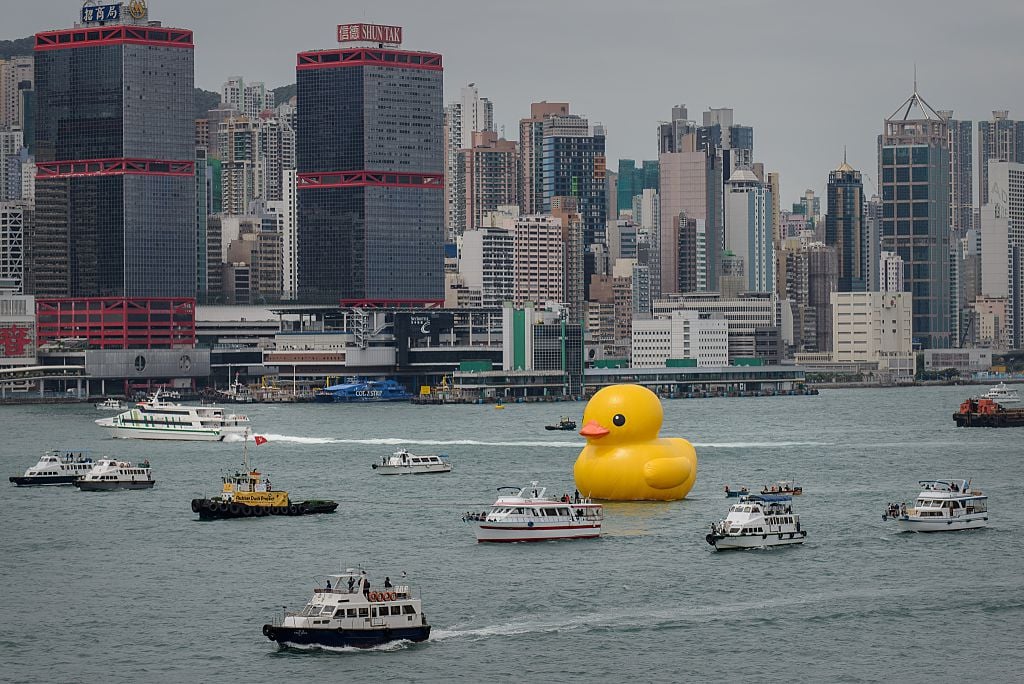
In the past year alone, no fewer than six galleries have opened or announced plans to open an outpost or office somewhere in Asia.
Amid announcement after announcement, it may feel like Western art businesses have been working forever to tap into the Asian art market. But in fact, the push to set up outposts in China—as well as South Korea and Japan—began less than a decade ago. And much of the momentum has picked up only in the last several years. In a recent interview, the CEO of Phillips, Edward Dolman, called China “potentially the largest growth market for the art business, anywhere.”
Now, galleries are looking not only to import their own artists to cities like Shanghai and Beijing, but also to scout major local talent. And some have begun to look beyond financial hubs like Hong Kong to expand into less saturated markets like Seoul.
Having trouble keeping up with all the action? We have compiled a handy list of major galleries and auction houses’ initiatives in Asia to get you up to speed—fast.
Christie’s
Staff take phone bids at a Christie’s auction in Shanghai. Photo: Peter Parks/AFP/Getty Images.
Phillips
Phillips Auction House.
Major hires: Ken Yeh, a veteran of the Chinese market, joined Phillips earlier this month to beef up its Asian expansion effort. The specialist in Modern and contemporary Asian art served as the chairman of Christie’s Asia before joining Acquavella Galleries to manage business development. Jonathan Crockett, formerly of Sotheby’s, joined as deputy chairman of Asia in 2015.
Strategy: Phillips held its first auction in Hong Kong in December 2015 and, after adding several specialists, organized its first full evening sale in the city this year. It has also branched out elsewhere in the continent, hiring regional directors in Japan and Taiwan and making plans to hold its first preview in South Korea.
Sotheby’s
Sotheby’s staff post-sale of a 59.60-carat giant diamond. Courtesy of Anthony Wallace/AFP/Getty Images.
Installation view of “Markus Brunetti: FACADES” at Axel Vervoordt Gallery in Hong Kong. Courtesy of the artist and Axel Vervoordt Gallery.
Ben Brown Fine Arts
Installation view of “Jan Worst: Interiors” at Ben Brown Fine Art in Hong Kong. Courtesy of @benbrownfinearts via Instagram.
Blum & Poe
Interior view of “Victor Man” at Blum & Poe’s Tokyo location. © 2017 Blum & Poe.
Cities active: Tokyo
Major hires: Ashley Rawlings, the former managing editor of ArtAsiaPacific magazine, has been the director of Blum & Poe’s Tokyo space since it opened.
Strategy: Japan is part of the DNA of Blum & Poe. The gallery’s co-founder Tim Blum worked in Tokyo for four years when he was in his 20s and began working with Japanese artists like Yoshitomo Nara and Takashi Murakami soon after opening in Los Angeles. The gallery debuted a viewing room in Tokyo in 2012 and a full-fledged outpost near Harajuku Station in 2014.
David Zwirner
David Zwirner flanked by Jennifer Yum and Leo Xu, heads of his new Hong Kong gallery. Photo courtesy of David Zwirner.
Gagosian
Installation view of “Cy Twombly: The Last Paintings” at Gagosian, courtesy of Gagosian Gallery.
Hauser & Wirth
Hauser & Wirth’s future home in Hong Kong. © CL3 Architects / Henderson Land Ltd.
Lehmann Maupin
Installation view of Tracy Emin’s “I Cried Because I Love You” at the Lehmann Maupin gallery in Hong Kong. Photo: Anthony Wallace/ AFP AFP/Getty Images.
Strategy: The gallery recently announced its plans to launch a “viewing office” in Seoul, near the National Museum of Modern and Contemporary Art. It is scheduled to open on December 14 with a group show of gallery artists. In 2013, the gallery opened its first international branch in a Rem Koolhaas-designed space in Hong Kong’s Pedder Building.
Lévy Gorvy
Danqing Li. Photograph courtesy of Lévy Gorvy.
Massimo De Carlo
Massimo de Carlo’s Hong Kong gallery. Image courtesy of Massimo de Carlo.
Installation view of “teamLab: Living Digital Forest and Future Park” at Pace Gallery. Courtesy of the artist and Pace.
Perrotin
The new site of Galerie Perrotin’s Tokyo location in the heart of Roppongi. Wallpaper by: Pierre Le-Tan. Courtesy of @emmanuelperrotin via Instagram.
Simon Lee
Installation view of Mel Bochner at Simon Lee Gallery, Hong Kong.
White Cube
Installation view of Danh Vō at White Cube in Hong Kong. Photo: Kitmin Lee for White Cube.
Strategy: White Cube made news in 2011 when it revealed that it had chosen Hong Kong as its first overseas gallery location, taking up two floors of an office tower a stone’s throw from the Pedder Building in the city’s Central neighborhood. The gallery inaugurated its Asian outpost in 2012 with an exhibition of Gilbert and George.